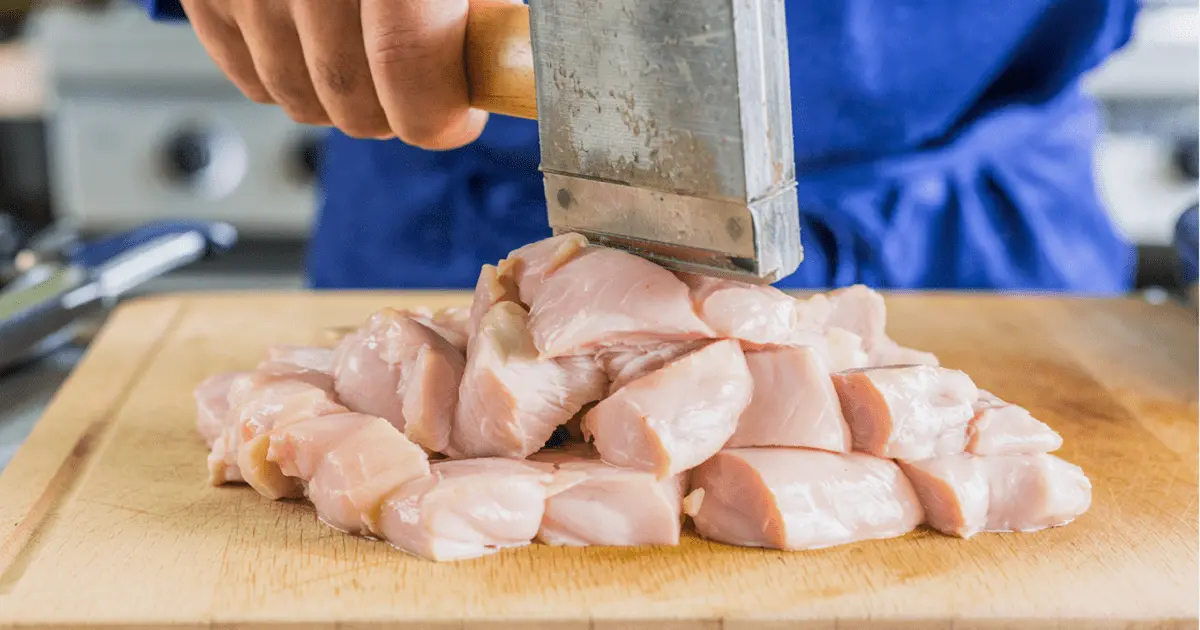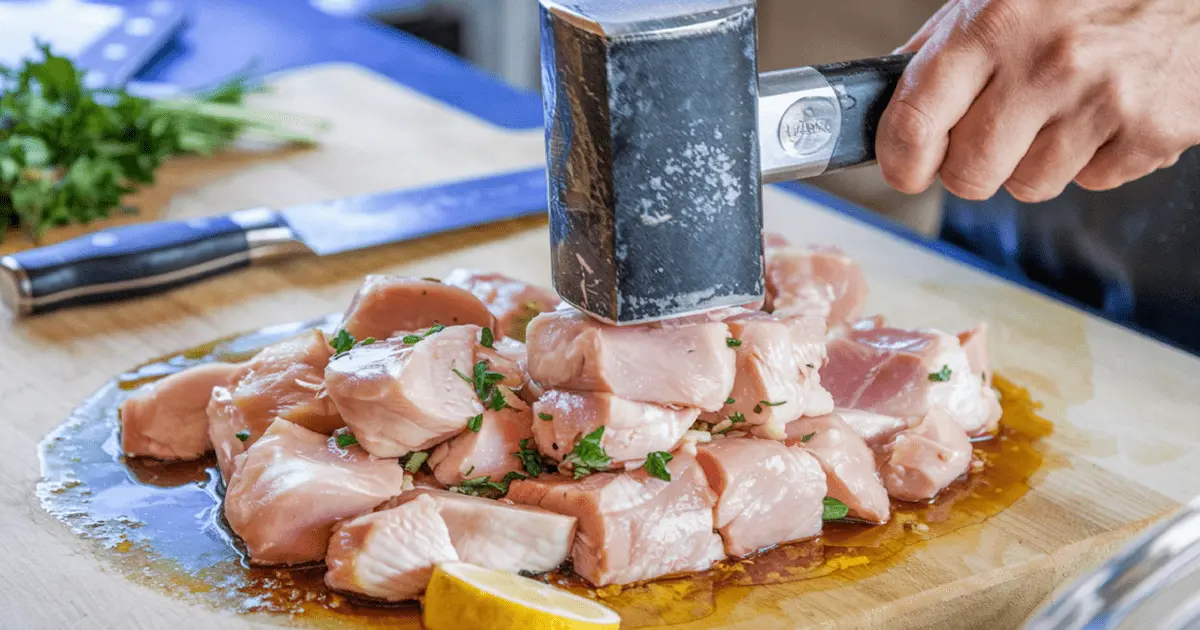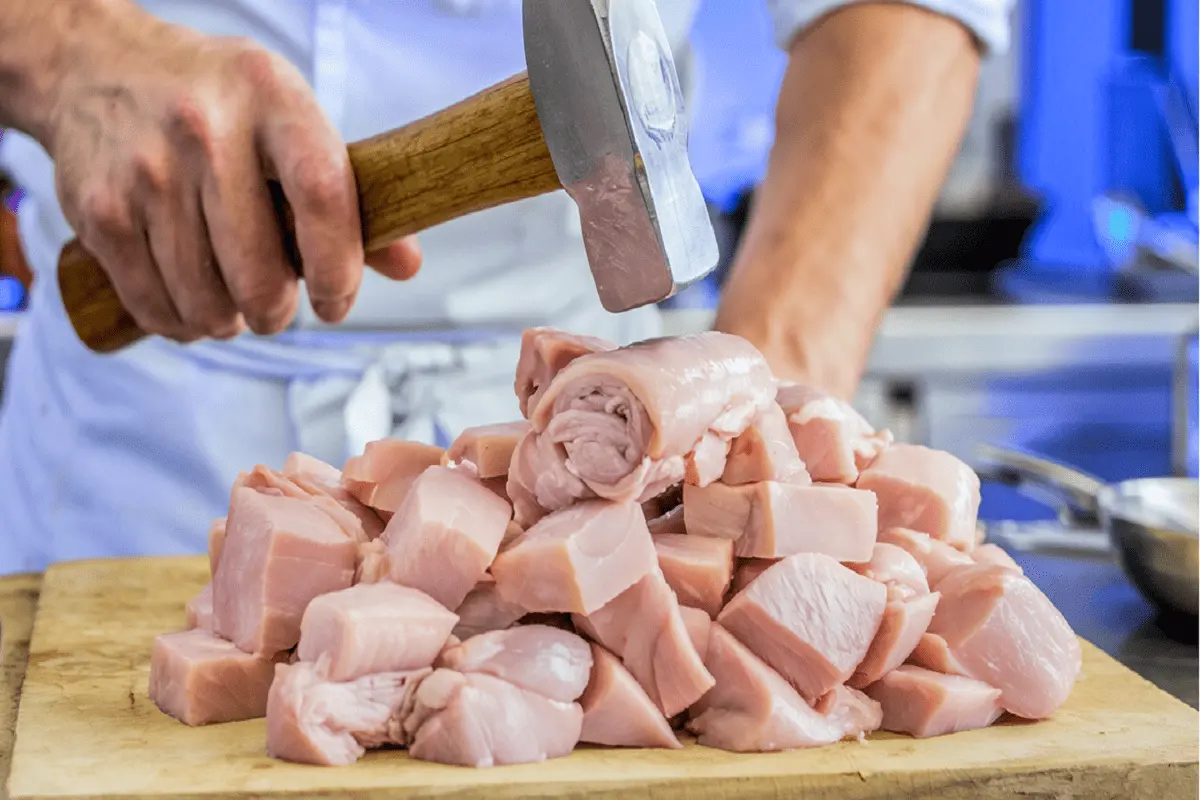How to tenderize cubed chicken is an essential culinary technique that can significantly impact the texture, flavor, and overall success of many dishes. When chicken is cut into cubes, it cooks quickly, which can sometimes lead to dryness or toughness if not handled properly. Tenderizing the chicken before cooking helps to break down the muscle fibers, ensuring that the meat stays juicy, tender, and full of flavor. Whether you’re preparing a quick stir-fry, a comforting soup, or a hearty casserole, mastering the art of tenderizing can elevate your dish from ordinary to extraordinary.
In this comprehensive guide, we’ll delve into the various methods of how to tenderize cubed chicken, from using a meat mallet to marinating, brining, and even employing traditional techniques like velveting. Each method has its unique benefits and is suited to different types of recipes. We’ll provide you with step-by-step instructions to ensure that your chicken turns out perfectly every time, no matter the cooking method. Additionally, we’ll share expert tips on how to maintain tenderness throughout the cooking process, helping you achieve consistently delicious results that will impress family and guests alike.
To further understand the importance of keeping chicken tender, explore this how to keep chicken tender guide.
Why Tenderizing Cubed Chicken is Important
When chicken is cubed, it tends to cook faster, which can sometimes lead to dryness or toughness if not handled correctly. Tenderizing helps break down the proteins in the meat, resulting in a softer texture that is more pleasant to eat. Proper tenderizing can also enhance the chicken’s ability to absorb flavors from marinades and seasonings.
For those looking to achieve perfectly tender chicken every time, it’s essential to understand the different methods available. You can find more insights on how to keep chicken tender in this tenderizing chicken guide.
Understanding Why Chicken Becomes Tough
Chicken can become tough for several reasons. Overcooking is a primary culprit, as it causes the proteins in the meat to contract tightly, squeezing out moisture. Improper handling, such as cutting the chicken incorrectly or cooking it at too high a temperature, can also lead to a tough texture. Additionally, the cut of chicken used plays a role; some cuts naturally have more connective tissue, which can make the meat chewier if not tenderized properly.
- Causes of Tough Chicken:
- Overcooking.
- Cooking at too high a temperature.
- Using cuts with more connective tissue.
- Why Cubed Chicken is More Prone to Toughness:
- Smaller pieces cook faster, increasing the risk of overcooking.
- Incorrect cutting can cause uneven cooking.
Using a Meat Mallet to Tenderize Cubed Chicken
One of the simplest and most effective methods for tenderizing cubed chicken is using a meat mallet. This mechanical method breaks down the muscle fibers, making the chicken softer and more pliable.
Step-by-Step Guide to Using a Meat Mallet

- Prepare the Chicken: Place the cubed chicken between two sheets of plastic wrap or parchment paper. This helps prevent the chicken from tearing and keeps the workspace clean.
- Tenderize the Chicken: Gently pound the chicken with the flat side of a meat mallet. Use even pressure to avoid flattening the chicken too much. The goal is to break down the fibers without altering the shape of the cubes.
- Check the Texture: After tenderizing, the chicken should feel slightly softer to the touch. Avoid over-tenderizing, as this can cause the chicken to become mushy when cooked.
Using a meat mallet is particularly effective for tough cuts or when you’re short on time. It’s a straightforward method that requires minimal effort but yields excellent results.
Marinating Cubed Chicken
Marinating is another popular method for tenderizing chicken. By soaking the chicken in a mixture of acids, oils, and seasonings, you can break down the proteins and infuse the meat with flavor.
How Marinades Work
Marinades typically contain acidic ingredients such as lemon juice, vinegar, or yogurt. These acids help to break down the proteins in the chicken, resulting in a more tender texture. Oils in the marinade coat the chicken, helping to retain moisture during cooking. Herbs and spices add flavor, making the chicken more delicious.
Ingredients for an Effective Marinade
- Acid: Lemon juice, vinegar, yogurt.
- Oil: Olive oil, sesame oil, vegetable oil.
- Flavoring: Garlic, herbs, spices, salt, pepper.
Time Recommendations for Marinating
- Quick Marinade: 15-30 minutes.
- Standard Marinade: 2-4 hours.
- Overnight Marinade: 6-8 hours.
For optimal results, marinate the chicken in the refrigerator to prevent bacterial growth. Always discard the marinade after use, or boil it if you plan to use it as a sauce.
For more marinating tips and tricks, you can check out this marinating chicken for tenderness guide.
Brining for Extra Moisture and Tenderness
Brining is a process that involves soaking the chicken in a solution of water, salt, and sugar. This method helps the chicken retain moisture during cooking, making it juicier and more tender.
What is Brining?
Brining works by using osmosis to draw water into the chicken, along with the flavors of the brine. The salt in the brine breaks down the proteins in the meat, resulting in a softer texture. Sugar can be added to enhance the flavor and help the chicken brown during cooking.
Simple Brine Recipe
- Ingredients:
- 1/4 cup of salt.
- 1/4 cup of sugar.
- 4 cups of water.
- Instructions:
- Dissolve the salt and sugar in the water.
- Submerge the chicken in the brine solution.
- Refrigerate for 1-2 hours for cubed chicken, ensuring the meat is fully submerged.
How Brining Impacts Flavor and Texture
Brining not only tenderizes the chicken but also enhances its flavor. The salt helps to season the meat from the inside out, while the sugar adds a subtle sweetness and promotes browning. Brined chicken tends to be juicier and more flavorful than unbrined chicken.

Velveting: The Chinese Technique for Tenderizing Chicken
Velveting is a traditional Chinese cooking technique that involves coating the chicken in a mixture of egg white, cornstarch, and sometimes rice wine or soy sauce before briefly blanching or frying it. This method creates a protective layer around the chicken, preventing it from drying out during cooking.
Explanation of the Velveting Process
Velveting works by sealing in the chicken’s juices, resulting in an incredibly tender and moist texture. The cornstarch forms a light coating that helps protect the meat from the high heat of stir-frying, while the egg white adds richness and a silky texture.
Ingredients Required for Velveting
- Cornstarch: 1-2 tablespoons.
- Egg White: 1 large egg white.
- Optional: Rice wine, soy sauce.
Step-by-Step Instructions for Velveting Cubed Chicken
- Mix the ingredients: In a bowl, combine the cornstarch, egg white, and any additional ingredients you choose.. Stir until smooth.
- Coat the Chicken: Add the cubed chicken to the mixture, ensuring each piece is fully coated.
- Blanch or Fry: Blanch the chicken in hot water for 30 seconds, or quickly fry it in hot oil until the exterior turns white.
- Finish Cooking: After velveting, the chicken can be stir-fried, sautéed, or cooked in a sauce.
Velveting is an excellent method for stir-fry dishes, where the chicken needs to remain tender despite being cooked over high heat. For more details on velveting, check out this velveting chicken guide.
Slow Cooking to Maintain Tenderness
Slow cooking is another effective method for tenderizing cubed chicken. By cooking the chicken at a low temperature over an extended period, the meat becomes tender and flavorful without the risk of overcooking.
Benefits of Slow Cooking for Tenderizing Chicken
Slow cooking allows the chicken to break down gradually, resulting in a soft, melt-in-your-mouth texture. This method is particularly effective for tougher cuts of chicken or when you’re preparing a dish that requires long cooking times, such as stews or casseroles.
Best Practices for Slow Cooking Cubed Chicken
- Low and Slow: Cook the chicken on the low setting for 4-6 hours. This ensures the meat remains tender without drying out.
- Add Moisture: Include broth, water, or sauce to keep the chicken moist. The liquid serves to soften the meat and imbue it with flavor.
- Avoid Overcrowding: Give the chicken enough space in the slow cooker to cook evenly. Overcrowding may result in unevenly cooked food and tougher textures.
How Slow Cooking Compares to Other Methods
While slow cooking takes longer than other methods, it’s a set-it-and-forget-it technique that yields consistently tender results. It’s ideal for busy days when you want a ready-to-eat meal without constant attention.
Choosing the Right Spices and Herbs
Flavoring cubed chicken goes hand-in-hand with tenderizing. The right combination of spices and herbs can enhance the tenderness while adding depth to the dish.
How Seasoning Impacts Tenderness
Certain spices and herbs, such as ginger and garlic, possess properties that can tenderize meat.. These ingredients help break down proteins in the chicken, making it softer. Salt is also crucial, as it helps retain moisture during cooking.
Recommended Spices and Herbs for Tenderizing
- Ginger: Adds a warm, slightly spicy flavor while helping to tenderize.
- Garlic: Enhances the savory taste and contributes to tenderizing.
- Paprika: Adds color and a mild flavor without overpowering the dish.
- Rosemary and Thyme: Classic herbs that pair well with chicken and aid in tenderizing.
Tips for Balancing Flavor and Tenderness
- Pre-Seasoning: Season the chicken before cooking to allow the flavors to penetrate the meat.
- Post-Cooking Additions: Add fresh herbs or a squeeze of citrus after cooking to brighten the flavors without affecting tenderness.

Avoiding Common Mistakes in Tenderizing Cubed Chicken
Even with the best intentions, mistakes can happen when tenderizing chicken. Outlined below are some frequent pitfalls and strategies for avoiding them:
Over-Tenderizing: How It Can Ruin the Texture
Tenderizing chicken is essential, but overdoing it can result in a mushy texture. Whether using a meat mallet or marinating, it’s crucial to monitor the process to avoid breaking down the meat too much.
Missteps in Marinating: Time and Ingredient Errors
Marinating chicken for too long, especially in highly acidic marinades, can lead to an unpleasant texture. Stick to recommended marinating times and avoid using overly acidic ingredients in excess.
Avoiding Overcooking During the Tenderizing Process
While methods like slow cooking are great for tenderizing, overcooking can still occur if not monitored. Always ensure the chicken’s internal temperature and texture are checked to confirm it is cooked properly.
FAQs on Tenderizing Cubed Chicken
1. How to tenderize chicken cubes?
Tenderizing chicken cubes can be done through several methods, including using a meat mallet, marinating, brining, velveting, or slow cooking. Every technique contributes to the breakdown of proteins in the meat, leading to a tenderer texture.
2. What is the best method to tenderize chicken?
The optimal method varies depending on the dish being prepared.. For quick cooking, using a meat mallet or marinating is effective. For stir-fries, velveting is ideal. Brining and slow cooking are excellent for dishes that require longer cooking times.
3. How to make chicken super tender?
To make chicken super tender, consider combining methods, such as marinating followed by velveting or slow cooking. Using a meat mallet before marinating can also enhance the tenderness further.
4. How do you keep diced chicken tender?
To keep diced chicken tender, avoid overcooking, use marinades or brines, and consider cooking methods like slow cooking or velveting. Adding moisture through sauces or broths can also help maintain tenderness.
Conclusion
How to tenderize cubed chicken is not just an optional step; it’s essential for elevating the quality of your dishes. Properly tenderized chicken absorbs flavors better, cooks more evenly, and offers a juicy, melt-in-your-mouth texture that can transform a simple meal into something truly special. Each tenderizing method—whether it’s using a meat mallet, marinating with a flavorful mix, soaking in a brine, or employing the velveting technique—brings unique advantages that can be matched to the specific needs of your recipe. For instance, a quick stir-fry benefits greatly from velveting, ensuring the chicken stays tender despite the high heat, while slow cooking allows tougher cuts to become succulent over time.
Moreover, understanding these techniques helps you avoid common pitfalls, such as over-tenderizing or inadvertently drying out the chicken. By applying these methods thoughtfully, you gain greater control over the texture and flavor of your chicken, making each meal you prepare not only more enjoyable but also more successful. Whether you’re preparing a simple weeknight dinner or a more elaborate dish for a special occasion, mastering the art of tenderizing chicken cubes will undoubtedly enhance the overall dining experience, making every bite satisfying and memorable.
For additional tips on tenderizing chicken and ensuring the best results in your cooking, explore this how to keep thin chicken breast moist guide.

